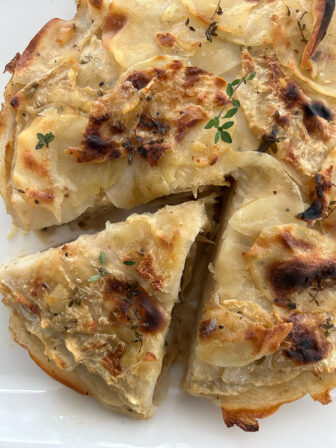Iwoke up this morning feeling nostalgic for the era of the cushy magazine expense account. In particular, I was missing the day when I utilized mine to purchase a pile of knobby root vegetables from the Union Square Greenmarket in New York City.

I was facing a deadline for a big feature story on roots and, realizing that carrots and beets comprised the extent of my root-veg expertise, told my editor that I needed to spend a couple of days and a few dozen dollars diving deep into roots research. I bought salsify, scorzonera, burdock, parsley root, celeriac, parsnips, rutabaga and turnips, among others. I lugged them all back to my tiny apartment, gathered up a handful of cookbooks, including one called Great British Cooking (a title which struck me as rather cheeky), and got to work.
Among my discoveries: Scorzonera does taste like oysters; salsify a bit like artichokes; both are remarkably delicious, especially when roasted. Turnips are turnippy no matter what you do to them. And I needed more parsnips in my life, pronto.
I also discovered that I was wrong about Great British Cooking. Its recipes are genuinely great.
My research further revealed that I adore almost any root vegetables sliced thin, layered and baked — think scalloped potatoes with or without the cream. Since then, I have made numerous iterations of this kind of dish, including this celeriac-and-potato “cake,” which was on holiday rotation in my kitchen for over a decade, a sweet potato and apple tian (ditto), and a handful of root-based pavés, Annas and terrines.
One of the things I love about these layered vegetable dishes is that they emphasize one of eating’s overlooked pleasures: its textural rhythm. You experience scalloped potatoes or a parsnip pavé as a quick and subtle repetition, a sequence of resistance and release in your teeth. For that reason alone, these dense, stratiform dishes make terrific additions to winter meals, with all their messy, saucy stews and braises.
And although slicing the vegetables takes a bit of time and focus, the dishes themselves can be quite simple, layered with nothing more than a little olive oil or melted butter, a sprinkling of salt, and some thyme leaves or mustard. You can top them with bread crumbs and cheese to make a gratinee, or leave them bare. And as lovely as they are as a side dish, they also work well as a main, dressed up with salad and a few toasted pumpkin or sunflower seeds.
What baffles me is that this category of dishes doesn’t have a family name, the way that casseroles or stews do. The tian, from Provence, is named for the earthenware dish it’s baked in; the gratin for the crisp crust created by scraping — or grating — crumbs or cheese over the top of a layered dish; the pavé for its resemblance to paving stones. Scalloped potatoes take their name neither from shellfish nor the shape of their shells, but from the old English word collop, which means to slice thinly. I like to be intentional with my words, and I feel that I am on shaky paving stones when discussing these dishes.
One thing they all have in common, however, is that their names are fancier than the ingredients that comprise them. Which makes them a kind of culinary fairy tale: You take something humble, cheap and hardy, and gussy it up for the dinner table — and never mind that no one else is picking up the tab.
Celeriac Pavé
- 1 medium celeriac, about 1 pound
- 4 tablespoons butter
- 2 tablespoons olive oil
- 2½ tablespoons Dijon mustard
- 4 cloves garlic, peeled and minced
- 1 pound Yukon gold or other waxy potatoes
- 1 tablespoon fresh thyme leaves
- 1 teaspoon salt and a few grindings pepper
- ¼ cup chicken or vegetable stock
Heat the oven to 375 degrees. Grease a 2-quart casserole or Dutch oven, or line the bottom and sides of an 8-inch cake pan with parchment (see note below). Fill a large bowl with cold water. Slice the potatoes and celeriac thinly on a mandoline, transferring slices to water as you work. Melt the butter in a saucepan, and when it starts to bubble, add the olive oil and garlic and cook over low heat for 5 minutes, taking care not to burn the garlic.
Remove from heat and whisk in the mustard, thyme leaves, salt and pepper (don’t worry if they separate). Drain the potatoes and celeriac and spin them a few times in a salad spinner, flipping them over between spins. Return the vegetables to the (dry) bowl and toss with the mustard butter until thoroughly coated. Arrange the mixture in a baking dish. Pour over the stock. Cover with a circle of parchment paper, then bake for about an hour, until tender. Remove the paper and turn the heat up to 425 degrees and bake until the top is crispy.
Note: If you make this in a small casserole or Dutch oven, you can scoop out portions to serve. If you make it in an 8-inch cake pan lined with parchment, you can turn it out onto a platter, then flip it upright and cut it in slices, like a cake, for serving.
